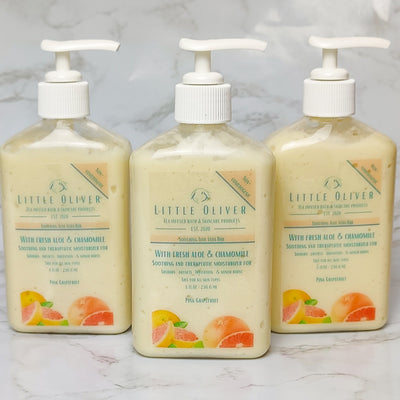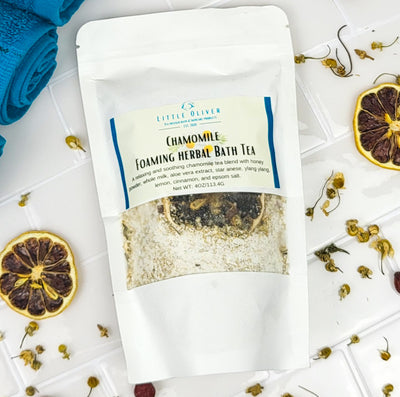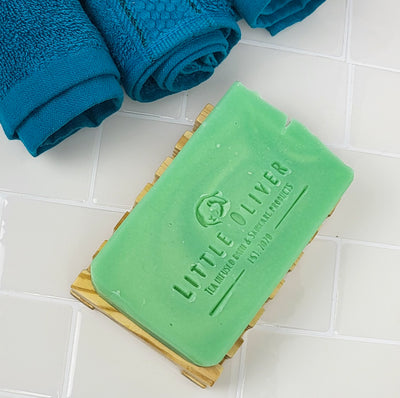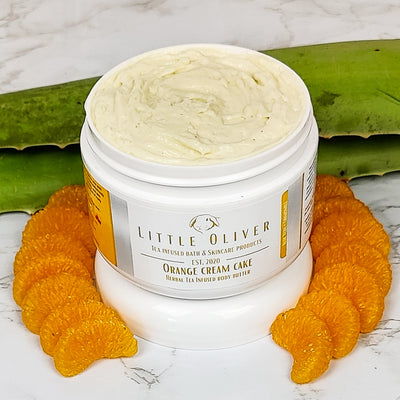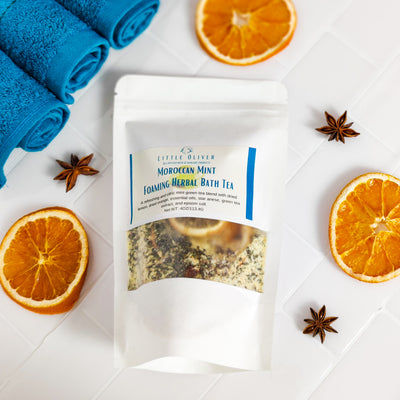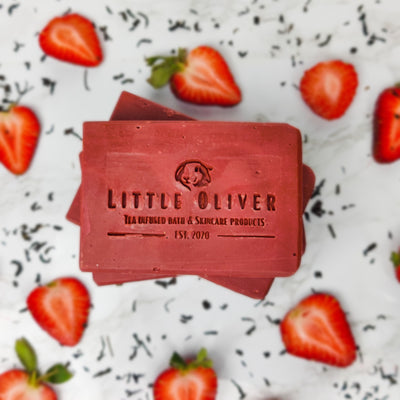4 Great Herbs For Soothing Irritated Skin
Posted by Lance Hunter on

Medicinal use of Herbs and botanicals is a practice that has a long and storied history. They've been used both orally and topically for thousands of years. In fact, the earliest written records about the use of plants for Medicinal purposes date back more than 5,000 years to the days of humankind's first known civilization, the sumerians of ancient mesopotamia. Although these are the first written records, archeological finds indicate that the use of plants, herbs, and botanicals may have already been an established practice amongst indigenous humans as far back as 60,000 years ago.
One major use for these ingredients is to help soothe dry and irritated skin. Your skin is your body's first line of defense against the outside world. Many factors like allergies, low humidity, chemicals, and sunlight can play a role in causing irritated and dry skin. Conventional over the counter products are the gold standard these days to help treat irritation due to the amount of scientific research that provides proof of their efficacy and effectiveness, but the uptick in popularity of herbal ingredients in recent years has led to an increase in their use in mainstream cosmetic, bath, and beauty products as well as their use as stand alone treatments once again.
If you're ever in need of a soothing remedy for dryness and/or irritation and you want to try the "natural route", below is a list of 4 herbal and botanical ingredients that may be just what you're in need of.
4 Great Herbs For Soothing Irritated Skin
1. Aloe Vera
There are more than 500 known species of aloe vera, but the one that is most familiar to us is the Aloe barbadensis miller a green succulent plant with plump spikey leaves filled with a gel that is comprised of 99% water. It's soothing inner gel is often used topically to treat sunburn and skin irritation. In addition to the skin soothing properties of aloe vera, it also has really great anti-oxidant and anti-microbial properties.
Key soothing nutrients
Bradykinase: An anti-inflammatory enzyme that helps reduce inflammation when applied to the skin.
Auxins and Gibberellins: These 2 hormones present in aloe vera help with wound healing and contain anti-inflammatory properties to reduce skin irritation
Fatty Acids: Aloe vera gel contains 4 fatty acids including lupeol, cholesterol, campesterol, and beta-sisosterol - all of which provide anti -inflammatory benefits.
Vitamin B12: This vitamin Reduces inflammation, dryness, and acne. It also Supports skin cell production.
Salicylic Acid: This acid possess anti-inflammatory and antibacterial benefits. It also plays a role in skin cell turnover and reducing the formation of acne.
2. Chamomile
Chamomile is one of mankind's oldest known herbs. Records of it's medicinal use for skin soothing and wound healing date back to the era of the ancient Greeks and Egyptians. It has a wide variety of skin care benefits including anti-aging, skin lightening, and skin soothing properties. It's often used to help soothe sunburn, eczema, and skin rashes.
Key soothing nutrients
Apigenin: Apigenin is a plant flavonoid with many skin benefits. It provides natural UV protection and inhibits skin inflammation by obstructing Lipopolysaccharide (LPS) induced production of pro-inflamatory cytokines. Apigenin also binds with the same brain receptors as benzodiazepines (drugs used to treat anxiety and insomnia), inducing a sedative effect and a feeling of calmness and sleepiness. In this way, chamomile and other plants with this flavonoid can lead to a more restful night's sleep. Sleep is the most often overlooked factor in skin care. There is a reason why it's called "beauty sleep" after all.
Chamazulene: Chamazulene is a hydrocarbon compound found in plants like chamomile, yarrow, and wormwood. It's a natural anti-inflammatory with a calming and healing effect on skin rashes, blisters, burns, redness, and irritation. Chamazulene provides anti -inflammatory benefits with it's ability obstruct the production of leukotrienes, which are lipid mediators that play an active role in acute and chronic inflammation and allergic diseases, such as atopic dermatitis. German chamomile is preferred over Roman chamomile due to it's higher concentration of chamazulene.
3. Licorice Root
The root of the licorice plant native to the Mediterranean and western Asia has been used medicinally for thousands of years. It's commonly used as a flavoring agent in toothpaste, tobacco, cough drops, and candy. Licorice root has shown an ability to improve skin inflammation and hyperpigmentation.
Key soothing nutrients
Glycyrrhizin: A key active compound of licorice root, responsible for giving licorice it's sweet taste. It's anti-inflammatory properties make it effective in reducing swelling, irritation, and redness, and treating irritating skin conditions like eczema and atopic dermatitis. This compound is present at 2-25 percent in licorice root, depending on the particular species.
Licochalcone A: A natural polyphenol present in licorice root. Licochalcone is reported to have anti-inflammatory, anti-oxidant, and anti-microbial effects in skin care. It has a potent ability as an anti-irritant and inhibitor of pro inflammatory responses in the body. Studies have shown that licochalcone A boosts skin's ability to produce self protecting anti-oxidant molecules. Consequently, skin cells pretreated with licochalcone A are better able to defend themselves against free radical damage after UV exposure.
According to Dr. Jochen Kühnl, Head of the Experimental Toxicology Lab. Together with Dr. Gitta Neufang, Head of Medical Management at Beiersdorf, and Dr. Dennis Roggenkamp, Research Scientist in the Sensitive & Ethnic Skin Lab, in experiments carried out on skin cell cultures under artificial UV mimicking sunlight. These results are transferable to human skin.
4. Willow Bark
Willow bark is extracted from various types of willow tree in North America, Europe, and Asia. It's medicinal use for pain relief goes back thousands of years. It contains a chemical called salicin, referred to as nature's aspirin due to it's comparable pain relieving and fever reducing capabilities.
Key soothing nutrients
Salicin and flavonoid compounds: Salicin is a glucoside made inside willow tree bark and is used for it's pain relief and anti-inflammatory properties. It is a chemical that is similar to asprin (acetylsalicylic acid). When applied topically salicin has the ability to alleviate irritation and redness and promote firmer smoother skin. Salicin in it's most natural form is also a milder alternative to biosynthesized salicylic acid. Salicin paired with various other anti-inflammatory plant flavonoids are responsible for the pain relieving and soothing effects of willow bark.
Share this post
- Tags: aloe vera, aloe vera body butter, aloe vera soap, anti-inflammatory, benefits of aloe vera soap, Chamomile, herbal skin care, soothing, soothing skin care






